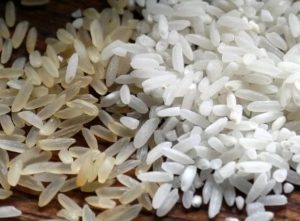Test to Identify Plastic Rice
To ensure that you do not become a victim of the harmful product,  there are six methods on how to identify plastic rice from the ordinary one
there are six methods on how to identify plastic rice from the ordinary one
- Boiling Test. When you are boiling the rice, observe it carefully. If it begins to form a thick layer at the top of your saucepan, then it is a straight sign of plastic rice.
- Water Test. Take a glass of cold water and pour a tablespoon of raw rice in it. Then mix it thoroughly. You will immediately know that you have an ordinary rice if it falls on the bottom. At the same time, plastic rice will stay on the top.
- Pound Test. Pound a few grains of your rice with the help of a pestle and mortar. Then look at the color of the powder. If it has a white color, then you deal with an ordinary rice. If the color is yellow, then it is a fake rice.
- Fire Test. Take a bit of rice and burn it with a lighter. Fake rice will always smell like burnt plastic.
- Hot Oil Test. Boil some oil and drop some rice into it. Plastic rice will always stick at the bottom of the saucepan.
- Mold Test. Boil a handful of rice. Put it for two or three days in a warm place. If there is no mold during that time, your rice is definitely fake. The reason is very simple: neither temperature nor weather affects the plastic.